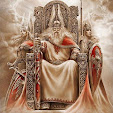This film is a 2.015 American historical drama-thriller film directed by Steven Spielberg from a screen-play written by Matt Charman and Ethan Coen and Joel Coen. The main characters are Tom Hanks, Mark Rylance, Amy Ryan, and Alan Alda.
Based on the 1.960 U-2 incident during the Cold War, the film tells the story of lawyer James B. Donovan who is entrusted with negotiationg the release of Francis Gary Powers, a pilot whose U-2 spy plane was shot down over the Soviet Union, in exchange for Rudolf Abel, a captive Soviet KGB spy held under the custody of the United States.
Bridge of Spies was shot under the working title of St. James Place. Principal photography began on September 8,2.014, in Brooklyn, New York City and the production proceededat Babeisberg Studios in Potsdam.
The film was released by Touchstone Pictures on October 16,2.015 in North America and distributed by 20th Century Fox in other territories. The name of the film refers to the Glienicke Bridge, which connects Potsdam with Berlin, where the spy exchange took place.
About the plot, in 1.957 Brooklyn, New York, Rudolf Abel retrieves a secret message from a park bench and reads it just before FBI agents burst into his rented room. He prevents discovery of the message, but other evidence in the room leads to his arrest and prosecution as a Soviet spy.
James B. Donovan, a lawyer who specializes in insurance settlements, is asked by his partners to take on Abel's defense. The United States believe that Abel is a KGB spy, but want him to have a fair trial to reduce the Soviet Union's opportunity to use it for propaganda. Donovan meets with Abel in prison, where the Russian agrees to accept his help.




















































